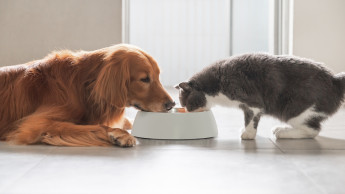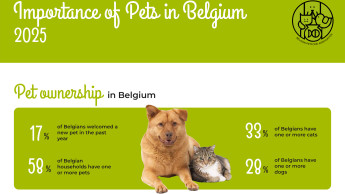The market for dry cat food is likewise growing in importance. Not as fast as for dry dog food, admittedly, but at a steady pace nevertheless. Dry cat food is primarily the domain of the speciality pet trade. The message propagated by the industry that dry food is cheaper than wet food is getting more of a hearing and has prompted many con-sumers to rethink their ideas on pet food. The upturn in the popularity of dry food has been aided by the improved taste of the products, and the times when cats consumed the brown pellets with some repugnance are long since gone.
The mass products from Masterfoods and Nestlé Purina Pet Care, which have carved up the wet food market in Europe between them for a long time, are being sold off increasingly at low prices in supermarkets. The reason for this lies in the sustained expansion of cheap private labels, which have increased the price pressure on manufacturers of branded goods considerably. Private labels have gained a significant market share in many countries and enjoy a good reputation with many consumers.
The speciality pet product trade has largely been able to keep its distance from the price war between the big supermarket chains. With exclusively distributed premium products in the wet food segment and high-quality nutritional products in the dry segment it has succeeded in consolidating its market position in many European states.
The prospects for the future of the pet product trade look good. Owning a pet is becoming an ever more complex business. Consumers, their awareness heightened by scandals such as the BSE crisis and bird flu, are increasingly critical and sceptical. Many of them now study the packaging on food products closely before buying, to find out what the contents are. When…

 Menü
Menü







 1-2/2006
1-2/2006












 Newsletter
Newsletter